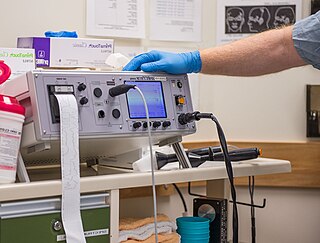
Bipolar disorder, previously known as manic depression, is a mental disorder characterized by periods of depression and periods of abnormally elevated mood that last from days to weeks each. If the elevated mood is severe or associated with psychosis, it is called mania; if it is less severe, it is called hypomania. During mania, an individual behaves or feels abnormally energetic, happy or irritable, and they often make impulsive decisions with little regard for the consequences. There is usually also a reduced need for sleep during manic phases. During periods of depression, the individual may experience crying and have a negative outlook on life and poor eye contact with others. The risk of suicide is high; over a period of 20 years, 6% of those with bipolar disorder died by suicide, while 30–40% engaged in self-harm. Other mental health issues, such as anxiety disorders and substance use disorders, are commonly associated with bipolar disorder.

Bipolar I disorder is a type of bipolar spectrum disorder characterized by the occurrence of at least one manic episode, with or without mixed or psychotic features. Most people also, at other times, have one or more depressive episodes, and all experience a hypomanic stage before progressing to full mania.

Catatonia is a complex neuropsychiatric behavioral syndrome that is characterized by abnormal movements, immobility, abnormal behaviors, and withdrawal. The onset of catatonia can be acute or subtle and symptoms can wax, wane, or change during episodes. There are several subtypes of catatonia: akinetic catatonia, excited catatonia, malignant catatonia, delirious mania, and self-injurious behaviors in autism.

Major depressive disorder (MDD), also known as clinical depression, is a mental disorder characterized by at least two weeks of pervasive low mood, low self-esteem, and loss of interest or pleasure in normally enjoyable activities. Introduced by a group of US clinicians in the mid-1970s, the term was adopted by the American Psychiatric Association for this symptom cluster under mood disorders in the 1980 version of the Diagnostic and Statistical Manual of Mental Disorders (DSM-III), and has become widely used since.
Dissociative identity disorder (DID), previously known as multiple personality disorder (MPD), and colloquially known as split personality disorder, is a mental disorder characterized by the maintenance of at least two distinct and relatively enduring personality states.

Electroconvulsive therapy (ECT) is a psychiatric treatment where a generalized seizure is electrically induced to manage refractory mental disorders. Typically, 70 to 120 volts are applied externally to the patient's head, resulting in approximately 800 milliamperes of direct current passing between the electrodes, for a duration of 100 milliseconds to 6 seconds, either from temple to temple or from front to back of one side of the head. However, only about 1% of the electrical current crosses the bony skull into the brain because skull impedance is about 100 times higher than skin impedance.

Borderline personality disorder (BPD), also known as emotionally unstable personality disorder (EUPD), is a personality disorder characterized by a long-term pattern of unstable interpersonal relationships, distorted sense of self, and strong emotional reactions. Those affected often engage in self-harm and other dangerous behaviors, often due to their difficulty with returning their emotional level to a healthy or normal baseline. They may also struggle with a feeling of emptiness, fear of abandonment, and detachment from reality. Symptoms of BPD may be triggered by events considered normal to others. BPD typically begins by early adulthood and occurs across a variety of situations. Substance use disorders, depression, and eating disorders are commonly associated with BPD. Some 8 to 10% of people affected by the disorder may die by suicide. The disorder is often stigmatized in both the media and the psychiatric field and as a result is often underdiagnosed.

Links between creativity and mental health have been extensively discussed and studied by psychologists and other researchers for centuries. Parallels can be drawn to connect creativity to major mental disorders including bipolar disorder, schizophrenia, major depressive disorder, anxiety disorder, OCD and ADHD. For example, studies have demonstrated correlations between creative occupations and people living with mental illness. There are cases that support the idea that mental illness can aid in creativity, but it is also generally agreed that mental illness does not have to be present for creativity to exist.
State-dependent memory or state-dependent learning is the phenomenon where people remember more information if their physical or mental state is the same at time of encoding and time of recall. State-dependent memory is heavily researched in regards to its employment both in regards to synthetic states of consciousness as well as organic states of consciousness such as mood. While state-dependent memory may seem rather similar to context-dependent memory, context-dependent memory involves an individual's external environment and conditions while state-dependent memory applies to the individual's internal conditions.

Lauretta Bender was an American child neuropsychiatrist known for developing the Bender-Gestalt Test, a psychological test designed to evaluate visual-motor maturation in children. First published by Bender in 1938, the test became widely used for assessing children's neurological function and screening for developmental disorders.
Bipolar disorder in children, or pediatric bipolar disorder (PBD), is a controversial mental disorder in children and adolescents that is mainly diagnosed in the United States, and is hypothesized to be like bipolar disorder (BD) in adults, thus is proposed as an explanation for extreme changes in mood and behavior accompanying periods of depressed or irritable moods and periods of elevated moods so called manic or hypomanic episodes. These shifts are sometimes quick, but usually are gradual. The average age of onset of pediatric bipolar disorder is unclear, but the risk increases with the onset of puberty. Bipolar disorder is rare in childhood. Pediatric bipolar disorder is typically more severe and has a poorer prognosis than bipolar disorder with onset in late-adolescence or adulthood.
Child and adolescent psychiatry is a branch of psychiatry that focuses on the diagnosis, treatment, and prevention of mental disorders in children, adolescents, and their families. It investigates the biopsychosocial factors that influence the development and course of psychiatric disorders and treatment responses to various interventions. Child and adolescent psychiatrists primarily use psychotherapy and/or medication to treat mental disorders in the pediatric population.
LifeLock Inc. is an American identity theft protection company based in Tempe, Arizona. LifeLock's system monitors for identity theft, the use of personal information, and credit score changes.

Bipolar II disorder (BP-II) is a mood disorder on the bipolar spectrum, characterized by at least one episode of hypomania and at least one episode of major depression. Diagnosis for BP-II requires that the individual must never have experienced a full manic episode. Otherwise, one manic episode meets the criteria for bipolar I disorder (BP-I).
Richard Todd Davis, also known as Todd Davis, is the cofounder of LifeLock, an American identity theft protection company based in Tempe, Arizona, that became a subsidiary of Symantec in 2019.
Yang Yongxin is a highly controversial Chinese clinical psychiatrist who advocated and practiced electroconvulsive therapy (ECT) without anaesthesia or muscle relaxants as a cure for alleged Internet addiction in adolescents. Yang is currently deputy chief of the Fourth Hospital of Linyi, in the Shandong province of China. He runs the Internet Addiction Treatment Center at the hospital.
Cyclothymia, also known as cyclothymic disorder, psychothemia/psychothymia, bipolar III, affective personality disorder and cyclothymic personality disorder, is a mental and behavioural disorder that involves numerous periods of symptoms of depression and periods of symptoms of elevated mood. These symptoms, however, are not sufficient to indicate a major depressive episode or a manic episode. Symptoms must last for more than one year in children and two years in adults.
Psychiatry is, and has historically been, viewed as controversial by those under its care, as well as sociologists and psychiatrists themselves. There are a variety of reasons cited for this controversy, including the subjectivity of diagnosis, the use of diagnosis and treatment for social and political control including detaining citizens and treating them without consent, the side effects of treatments such as electroconvulsive therapy, antipsychotics and historical procedures like the lobotomy and other forms of psychosurgery or insulin shock therapy, and the history of racism within the profession in the United States.

In ancient Rome, mental illness was thought to have been caused by divine punishment, demonic spirits, or an imbalance in the four humors. Ancient Roman doctors noticed patients with conditions similar to anxiety disorders, mood disorders, dyslexia, schizophrenia, speech disorders, among others. Anxiety was treated with Stoic practices similar to modern cognitive behavioral therapy, such as focusing on the present or analyzing the possible outcomes of a situation. Risk factors for mood disorders such as Bipolar disorder were thought to have been alcohol abuse, hypersexuality, aggression, and extreme emotions. Treatments included applying cool substances to the patient's head. People with intellectual disabilities were looked down upon, and they lacked legal protections. However, they could still function as laborers. People with possible schizophrenia were described by ancient Roman doctors and physicians, although they may have been describing mania instead of schizophrenia. Ancient doctors wrote that they should be treated with philosophy, intellectual activities, vomiting, leeching, bloodletting, and venipuncture.









